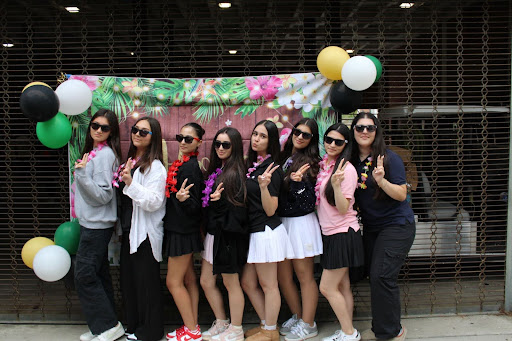California continues to have the worst fire season in recorded history
The Bobcat Fire burning a mountainside near Monrovia, only a few days after it started in early September.
The fire season in California is in full force, with this year being one of the worst in recorded history. One fire, in particular, affected GUSD students: the Bobcat fire in the nearby Angeles Forest. It is one of almost 25 fires which started to pick up in late August and early September. Cal Fire estimates that this year alone there has been a total of 4,100,000 acres burned, 9,200 buildings destroyed, and 31 confirmed fatalities.
The Bobcat fire is one of the largest recorded fires in L.A. County history, requiring the attention of over 1,5000 personnel to keep it under control. It has burned over 115,000 acres of land, forced road closures and caused property damage. It took almost the entirety of September to get the fire down to over 70 percent containment due to a period of the weather and winds cooling down.
The Bobcat Fire is around 93 percent contained as of early October. The fire has also threatened to scorch the historic Mount Wilson Observatory, the observatory where Hubble conducted research. It has already burned parts of the Devil’s Punchbowl Nature Center, a popular geological attraction known for its unique sandstone formations and trails.
The fires also forced the closure of all of California’s natural parks for the month of September. Only recently have parks been reopening a small portion of low-risk areas with restrictions on stoves and campfires. “As someone who enjoys hiking at Angeles Crest, I’m pretty sad that it’s on fire and closed down as going on these trails was a very fun experience for me,” said Clark senior Sion Fallah. “There are a lot of nice people you’ll meet on the way and the views are amazing. My favorite ones have waterfalls at the ends which is really nice for a swim after the hike.”
Even if residents are not directly affected by the fire’s flames, the air quality significantly worsened. Ash and smoke were also pushed inland due to the early Santa Ana winds. “I live closest to the Bobcat fire,” said Clark senior Edgar Agekyan. “The air faintly smelled like smoke, but it wasn’t hard to breathe.” The thick smoke also created an orange haze and dark skies that blanketed the area. Many people compared the skies to an apocalyptic sunset or a Martian sky. “The outside sky looked bright red or orange at the beginning and turned more gray the next day or two,” said Agekyan. “From the inside, it almost felt like it was the winter season because of how much less sunlight was hitting the house.”
Other major fires in the state include the Creek Fire, August Complex Fires and El Dorado Fire. The latter is infamous for being instigated by a smoke bomb used in a gender reveal party.
However, most fires this year are blamed on heavy winds, high temperatures, and lightning strikes. Climate change is a key factor for fires because of increased summer temperatures and exacerbating the dryness of vegetation. Heatwaves in early September reached the record high of 121 degrees and summer is now considered to be 2.5 degrees hotter than previous years.
Many major fires from the past two months have been contained but fires such as the August Complex and Creek fires are still only around 53 percent contained. Although these major fires are closer to Northern California, the continued high winds and dry air means the wildfire season is not over yet.

Hobbies/interests: Art and miniature Painting
Fav artist: Carpenter Brut
Movie you never get tired of watching: Edge of Tomorrow
Goal for the...









